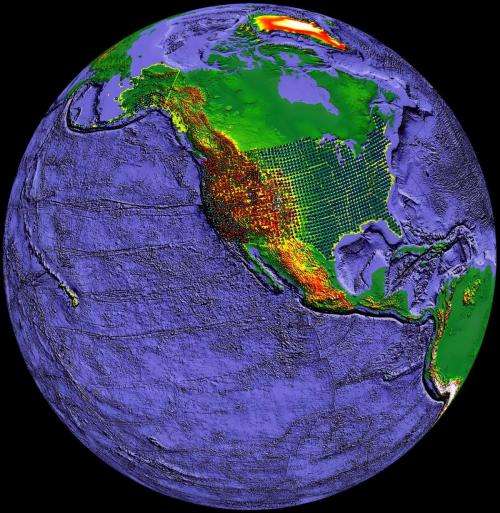June 16, 2014 report
Best of Last Week - Map of universe questioned, violent history of our faces and resistant bacteria found in food

(Phys.org) —It's been a quirky week for physics as a study finds weird magic ingredient for quantum computing—a team of researchers with the University of Waterloo's Institute for Quantum Computing found that an odd aspect of quantum theory called contextuality is a necessary resource to achieve what's been described as the bit of magic needed for universal quantum computation. Also, map of the universe questioned: Dwarf galaxies don't fit standard model—the mismatch is calling into question the standard model of cosmology, which no doubt has a lot of space scientists nervous. And who'd of thought that after years of geological study, that researchers would find new evidence for oceans of water deep in the Earth—beneath the United States, no less. In another bit of quirkiness, 55-year-old dark side of the Moon mystery is solved—turns out the lack of maria was due to a temperature gradient that came about as a result of the way our celestial partner was formed.
In completely unrelated news, a breakthrough of sorts has been achieved by a team of researchers at Penn State as they announce rescue of Alzheimer's memory deficit achieved by reducing 'excessive inhibition'—it's not a cure, of course, but a promising new way of treating the disease. And a team at the University of Utah is wondering if our countenance evolved into the shapes we see today as a means of minimizing damage due to people punching each other in the face; they wonder did violence shape our faces? That might explain a lot.
More practically, a team at Rice University has found a way to mimic the impressive skills of the Stenocara beetle—it pulls water out of morning fog and holds onto it for a long time—they've announced: nanotube forests drink water from arid air—modified carbon nanotubes that allow for harvesting water from the air for long-term storage.
And finally, news that should have us all worried as antibiotic-resistant bacteria found in food products for the first time—a squid at a fish market in Canada was found to have Pseudomonas in it, not a particularly bad bug, but one that could get into the human gut and help much deadlier bacteria such as E. coli become resistant. Is the day coming sooner than we thought when we won't have any useful antibiotics? Let's hope not.
© 2014 Phys.org





















